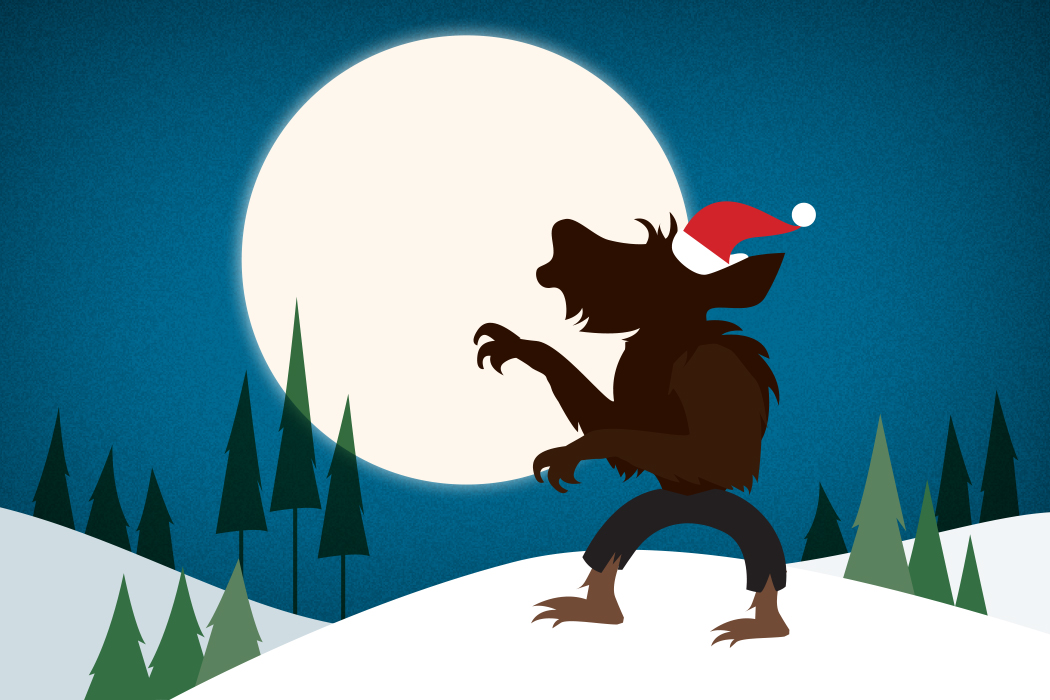
Illustration by Kaitlin O'Toole
Werewolves at Christmas
Christmas in some parts of the world is a time of increased activity by evil spirits, witches and monsters of all sorts, including humans who can transform themselves into wolves.
In the Middle Ages, Olaus Magnus said that in Prussia, Livonia and Lithuania werewolves gathered on Christmas night and then spread out to “rage with wondrous ferocity against human beings…for when a human habitation has been detected by them isolated in the woods, they besiege it with atrocity, striving to break in the doors and in the event of doing so, they devour all the human beings, and every animal which is found within.” At a certain castle the monsters held werewolf games and those too fat to leap over a wall were eaten by their fitter comrades.
It was also a medieval belief in Latvia and Estonia that “at Christmas a boy lame of leg goes round the country summoning the devil’s followers, who are countless, to a general conclave. Whoever remains behind, or goes reluctantly, is scourged by another with an iron whip….The human form vanishes and the whole multitude becomes wolves.” This transformation lasted for twelve days.
In Poland and northeastern Europe, it was believed that a child born on Christmas had a greater chance of becoming a werewolf and ritual steps were taken to prevent Christmas babies from this state.
Louis Frechette’s Christmas in French Canada claims that it was the belief in Québec that “a man who has been seven years without partaking of the Easter Sacrament falls prey to the infernal power, and may be condemned to rove about every night in the shape and skin of a wolf or any other kind of an animal, according to the nature of his sin. A bloody wound only can release him.”
In Louisiana it is said that Père Noel travels through the swamps and bayous in a flat-bottomed pirogue pulled by alligators and accompanied by a red-nosed werewolf.
The above is an excerpt from The World Encyclopedia of Christmas, which was written by Gerry Bowler in the University of Manitoba’s history department.







